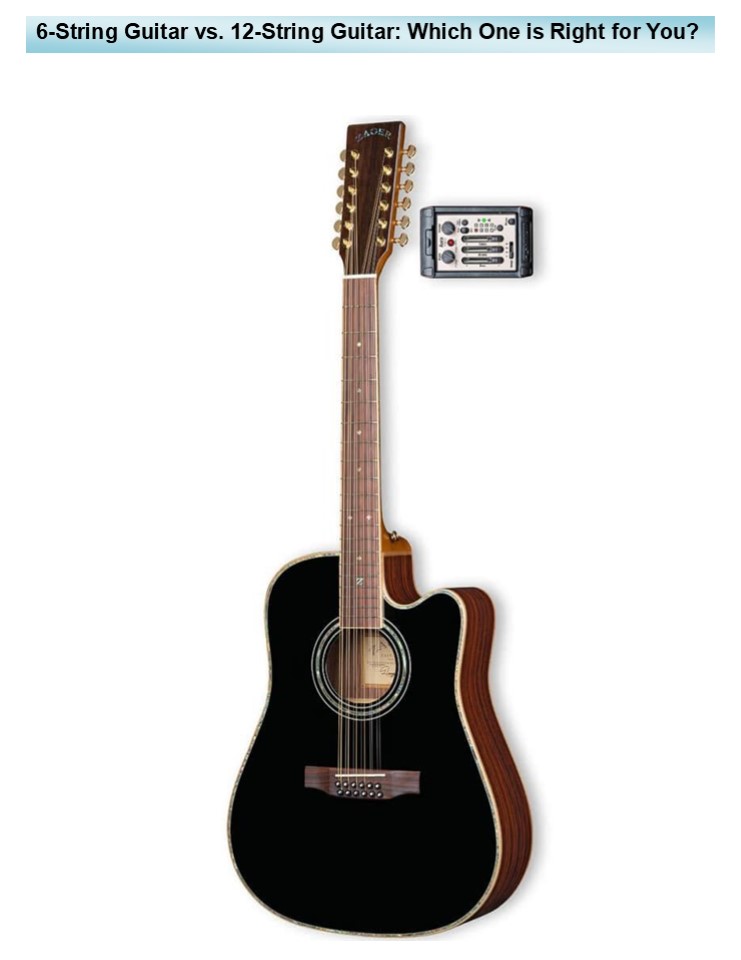6 String Guitar - PowerPoint PPT Presentation
Title:
6 String Guitar
Description:
The 6-string guitar is a versatile and timeless instrument, perfect for beginners and seasoned players alike. With its standard tuning and rich tonal range, it suits a wide variety of music styles—from rock and blues to classical and jazz. Crafted for comfort and performance, it's an essential tool for any guitarist. – PowerPoint PPT presentation
Number of Views:0
Title: 6 String Guitar
1
6-String Guitar vs. 12-String Guitar Which One
is Right for You?
2
6-String Guitar vs. 12-String Guitar Which One
is Right for You?
- Guitars are captivating instruments, offering a
wide range of sounds and styles. One fundamental
choice every guitarist faces is between a
6-string and a 12-string guitar. Understanding
the differences between them can help you select
the instrument that best suits your musical
preferences and playing style. - 6-String Guitars
- The 6-string guitar is the most popular type,
used across genres like rock, blues, pop, and
classical. It typically features six strings
tuned to E-A-D-G-B-E, allowing for versatile
chord structures and soloing capabilities. This
design offers a balanced combination of
playability and tonal range, making it suitable
for both rhythm and lead playing. - Six-string guitars are generally easier to learn,
making them a great choice for beginners. They
are also more affordable and require less
maintenance compared to 12-string guitars.
Whether youre strumming chords around a campfire
or shredding solos on stage, the 6-string guitar
is a reliable and versatile choice. - 12-String Guitars
- A 12-string guitar has six pairs of strings,
known as courses. The lower four pairs (E-A- D-G)
are usually tuned in octaves, while the higher
two pairs (B-E) are tuned in unison. This
configuration produces a rich, shimmering sound
that is often described as naturally chorused.
The fuller tone is popular in folk, rock, and
blues music. - However, the extra strings create more tension,
requiring a sturdier neck and precise tuning.
Playing a 12-string guitar demands more finger
strength and dexterity, making it a better fit
for intermediate to advanced players. It also
requires more time for tuning and maintenance. - Despite these challenges, the lush sound and
resonant tones make it worth the effort for many
musicians. - Design Differences
- Headstock 12-string guitars have elongated
headstocks to accommodate the extra tuning pegs. - Neck and Fretboard The neck is reinforced to
handle the added tension, and the fretboard is
slightly wider to provide space for the paired
strings.
3
- Tuning and Maintenance Tuning a 12-string guitar
can be more time- consuming, and string
replacement is more involved due to the increased
number of strings. - Which Guitar Is Right for You?
- For beginners, a 6-string guitar is generally
recommended due to its simplicity and
versatility. Its easier to play, requires less
maintenance, and is suitable for a wide range of
musical styles. If youre looking for an
instrument to learn on or play in a band, the 6-
string is a reliable choice. - A 12-string guitar, on the other hand, offers a
unique, resonant sound but requires more skill
and patience. Its ideal for intermediate to
advanced players who want to explore a richer,
fuller sound. If youre drawn to folk, rock, or
blues music and are ready for the challenge, a
12-string guitar could be the perfect addition to
your collection. - Recommended 6-String Guitars
- Zager ZAD80CE This acoustic-electric guitar
features a solid cedar top with rosewood back and
sides, offering a warm, balanced tone. - Fender CD-60SCE A versatile acoustic-electric
guitar with a solid spruce top, ideal for
beginners and intermediate players. - Yamaha FG800 Known for its great sound quality
and durability, perfect for those just starting
out. - Taylor GS Mini A compact, travel-friendly
acoustic guitar with a big sound, suitable for
all skill levels. - Recommended 12-String Guitars
- Zager ZAD900CE12 Crafted with a solid spruce top
and rosewood back and sides, this 12-string
acoustic-electric guitar delivers a deep,
resonant sound. - Guild F-2512E A well-crafted 12-string
acoustic-electric guitar known for its rich sound
and playability. - Fender CD-60SCE 12-String Affordable yet
high-quality, suitable for players transitioning
to a 12-string. - Ibanez AEG5012 An excellent option for those
looking for a budget- friendly 12-string with a
comfortable neck profile. - Can Beginners Play a 12-String Guitar?
4
Absolutely! Although its more challenging than a
6-string guitar, beginners can learn to play a
12-string with dedication and practice. It
requires more finger strength and dexterity due
to the doubled strings and increased tension.
However, the unique, full- bodied sound it
produces is worth the effort for those drawn to
its distinctive tone. If youre new to guitars,
starting with a 6-string model is recommended to
build your skills and confidence. Once
comfortable, you can transition to a 12-string
guitar to explore its rich, resonant
sound. Conclusion The choice between a 6-string
and a 12-string guitar ultimately depends on your
musical goals and playing experience. A 6-string
guitar offers versatility, ease of play, and is
great for beginners or those looking to play a
variety of musical styles. A 12-string guitar,
while more challenging, delivers a lush, harmonic
sound perfect for folk, rock, and blues. Whether
youre strumming simple chords or creating
complex harmonies, both types of guitars have
unique qualities that can inspire your musical
journey. Choose the one that resonates with you
and start creating beautiful music
today! Original Source https//bit.ly/3FhyrPW































